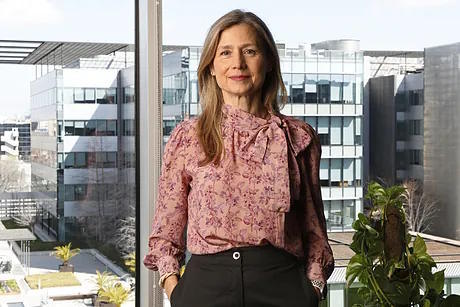This pharmacist, who has been leading the Spanish Agency of Medicines and Medical Devices (Aemps) since 2018, knows the strengths and weaknesses of our medicine cabinet. María Jesús Lamas (Baracaldo, 1967) boasts that Spain was one of the countries that did not experience shortages during Covid. "We have the ingredients in our industrial fabric to face the challenges of the strategic reserve," she explains.
She points out that little is known about the behind-the-scenes work of the agency, a state institution that has grown since her arrival. "We have gone from having a staff of over 350 employees to around 600. We must be able to attract the talent that makes it possible to know and map the available pharmaceutical resources and medical products," she says.
Before Aemps, the pharmacist was in charge of the Pharmacy Service at the University Hospital Complex of Santiago (CHUS), while also coordinating the Platforms and Methodology Area of the Health Research Institute of Santiago (IDIS - ISCIII). Few know that in 2013 she coordinated part of the response to the Santiago de Compostela train accident. "Our challenge was to bring medications to the bedside, so that no one had to go from one place to another in the hospital. We made a list of everything that would be needed and coordinated to ensure that nothing was missing," she explains.
This was the first of many key inventories carried out by Lamas. The next one came with the pandemic, where they almost covered a wall of the Aemps plant to monitor the situation. "Thinking mainly about the medications needed to keep the ICUs running, we mapped out our country's production capacities and coordinated them," she explains. The second one included the list of critical or essential drugs. "In fact, it was used as the basis for later creating the first European list of critical medications," she points out.
